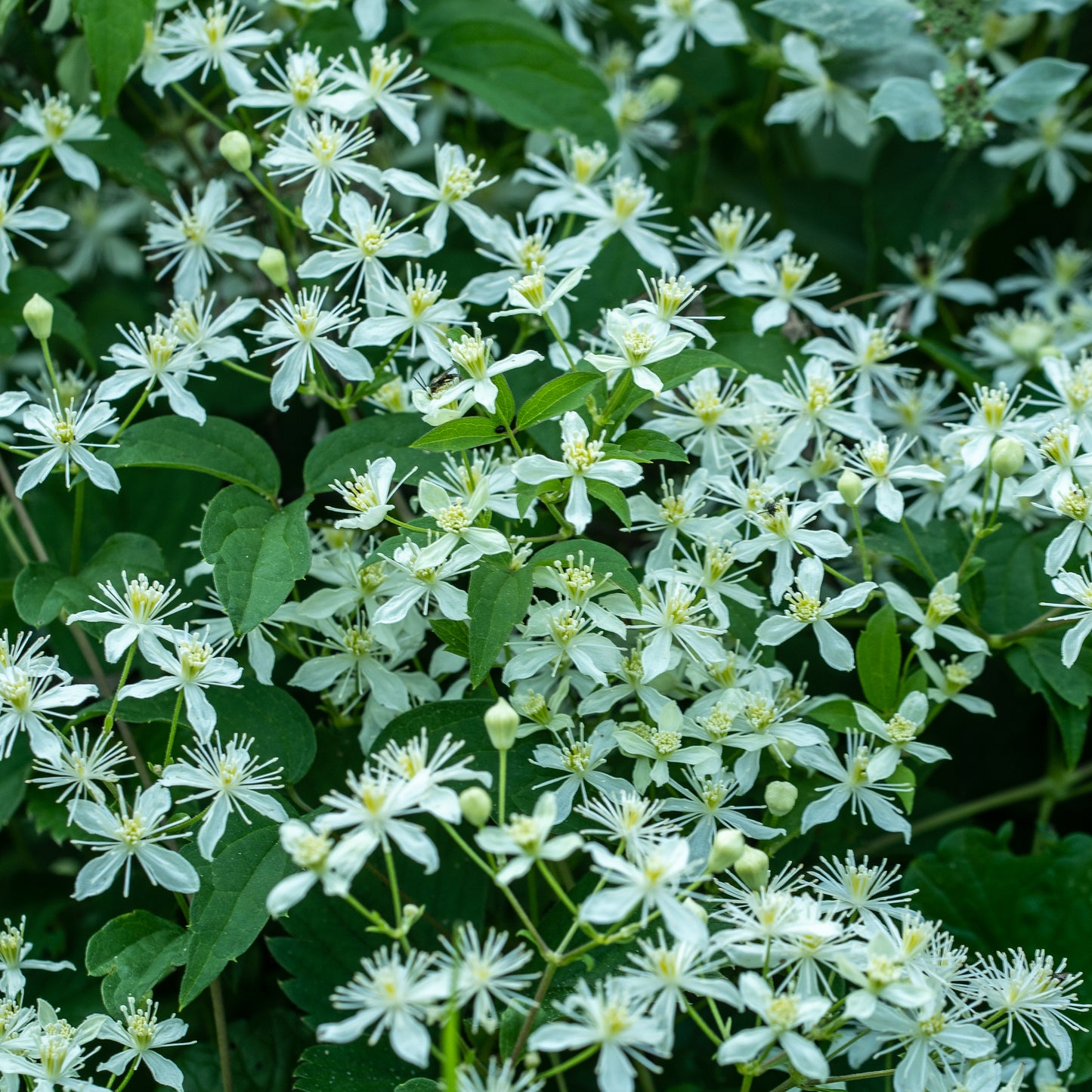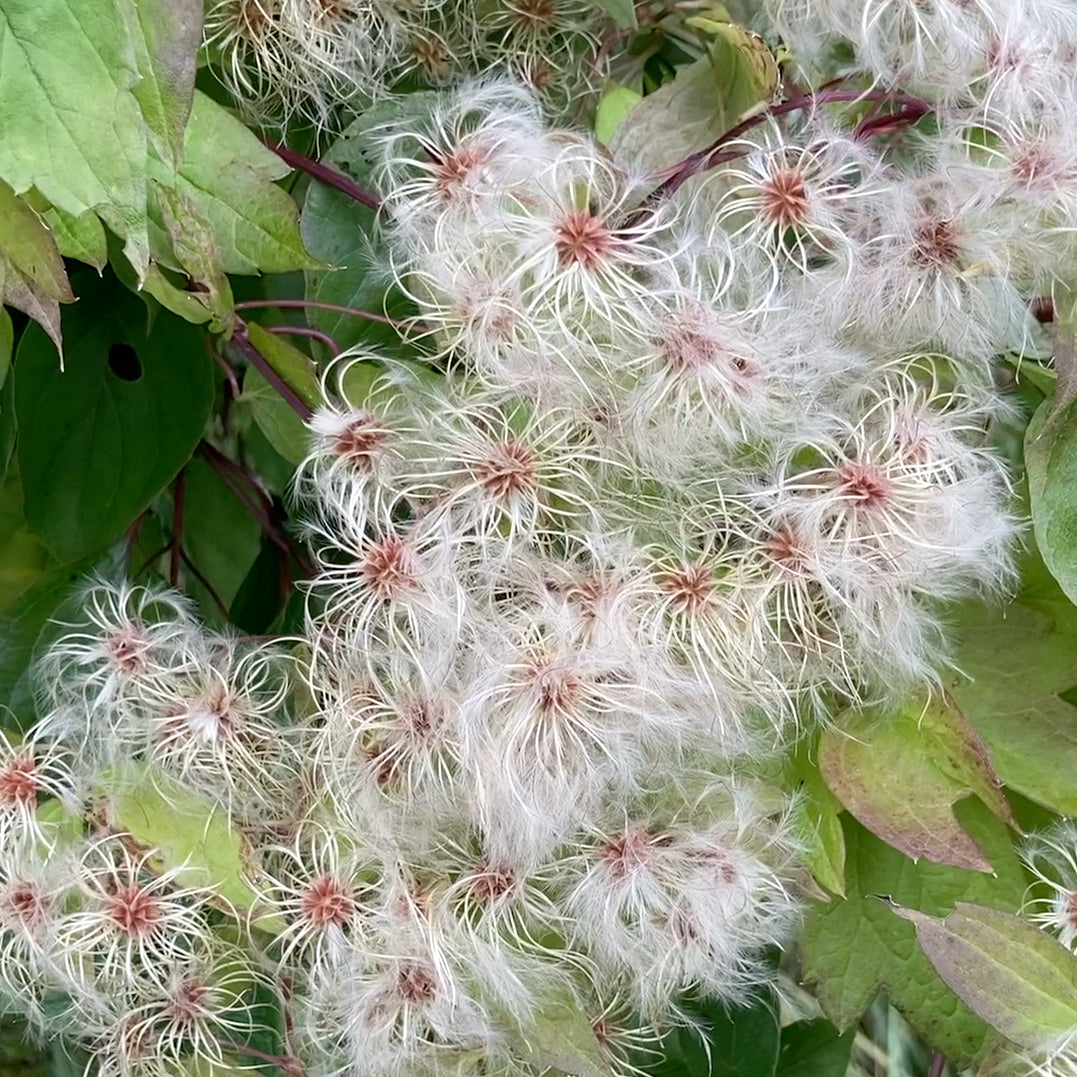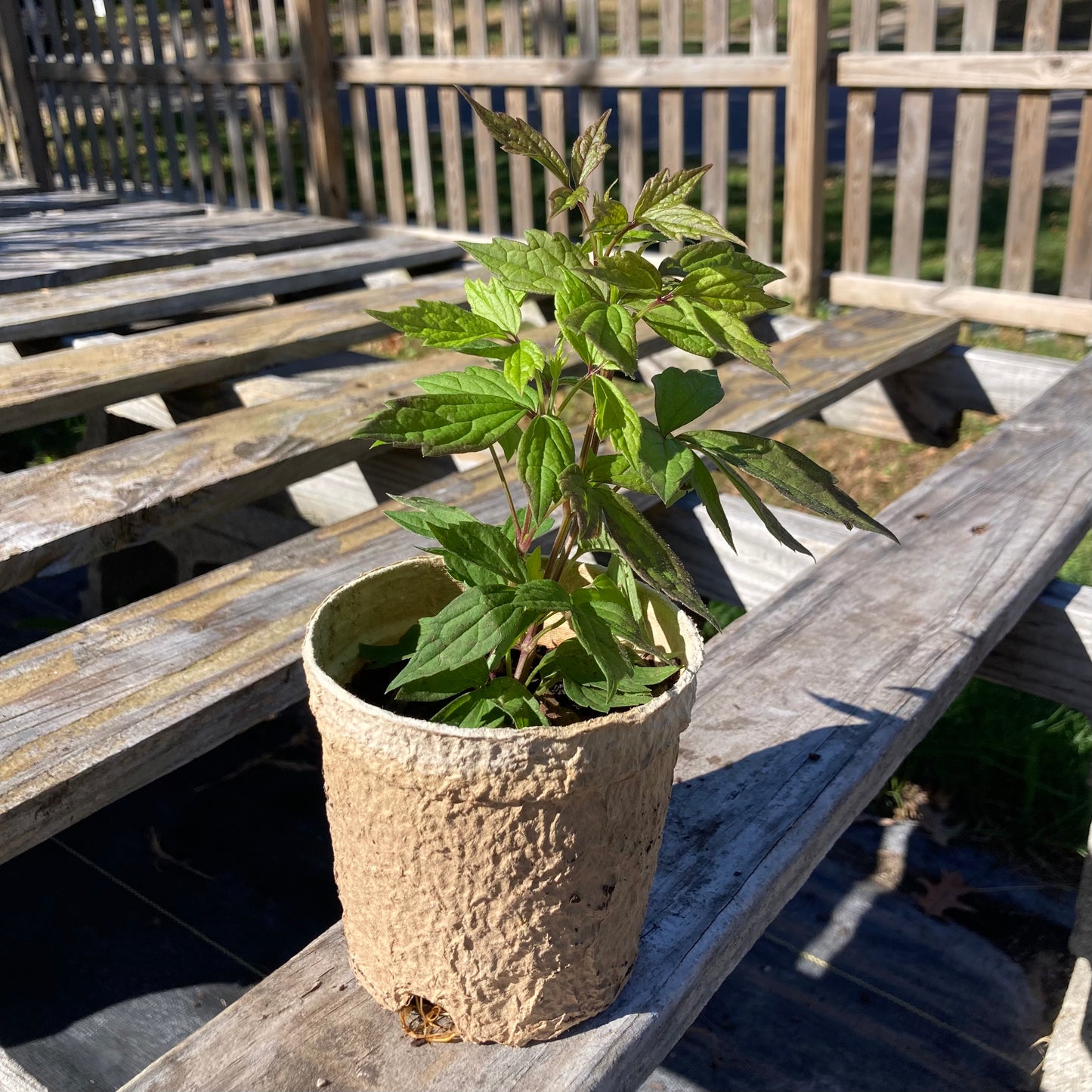Virgin's bower
Clematis virginiana
Clematis virginiana
7 remaining
Couldn't load pickup availability
Sun/shade: Full sun to part shade
Soil moisture: Medium to wet
Height: Up to 15'
Flowering period: Aug
Deer resistance: Medium
In a slow but stunning transformation, virgin’s bower’s cascading white blossoms are consumed in a smoke-like mass of billowy seed by season’s end.* Growing prodigiously during the summer months, the stems of Virgin’s bower can extend 15 feet in a single growing season, but due to NE Ohio’s cold winters, will die back nearly to the plant’s base each year. As it grows, this climbing vine will sprawl along the ground until encountering a trellis, fence, or another plant, at which point it will grow upward by wrapping its leaf stalks around the object in question. When in flower, virgin’s bower’s abundant, bright white blooms attract primarily short-tongued pollinators such as sweat bees, wasps, and flies.
In the natural landscape, virgin’s bower displays broad soil moisture adaptability, and can be found in wet environments and also as a component of dry, forest edge communities. In the latter, it grows alongside plants like black oak and rhododendron, whereas in Ohio wetlands, it is found with wingstem, rough-leaved goldenrod, common boneset, spotted Joe-Pye, and other species. As a vigorous climbing vine, Virgin’s bower presents unique opportunities to diversify the garden structure in situations of full to partial sunlight and moderately wet to moderately dry soil moisture.
*Note: Male and female flowers are usually on separate plants for this species, and seed production only occurs on female plants following pollination. In order for a female plant to produce seed, there must be a male plant nearby to serve as a pollen source.
Photo 1 © Jean Barrell, CC BY-2.0. Photo 2 by Julie Slater.





